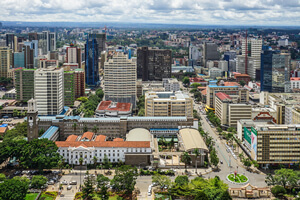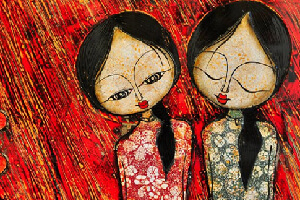Why Vegetable-Tanned Leather Is So Expensive
Narrator: This is said to be the world’s oldest leather-making tradition. It’s called vegetable tanning, and it’s a process that has been perfected over generations here in Tuscany. Artisans spend four to six weeks perfecting each piece that they touch. Vegetable-tanned leather is considered higher-quality and will last longer than synthetically treated leather. It takes at least 28 times longer to make, which is part of the reason why vegetable-tanned leather only makes up roughly 10% of all leather available today. It can also cost around three times more than the cheaper version. So how exactly is vegetable-tanned leather made? And why is it so expensive?
Vegetable tanning is said to date back to roughly 6,000 BCE, when people living in early civilizations sought a way to make animal skins resistant to weather and decay. Genuine vegetable-tanned leather uses these natural tanning agents from sources like quebracho, chestnut, or mimosa trees. The substances, known as tannins, will naturally bind to the collagen proteins in a hide, turning it into leather as we know it. Just as they do for trees, the tannins protect hides being turned into leather from bacteria and other substances, which gives leather the longevity and versatility that it’s known for.
Until the 19th century, vegetable tanning was the only way to make leather. But today, 90% of all leather goods are made using chrome or mineral tanning, a leather-making process that uses synthetic tannins. On first glance, consumers may think this softer leather is of higher quality, but it won’t have the same life span.
When the hides arrive at the tannery, they soak in water for 24 hours to remove the salt that kept them preserved on their journey.
Leonardo Volpi: The raw material used is mainly cowhide, which is a byproduct from the meat industry for human consumption. These are hides that can come from all over the world. They mainly come from Europe for our industry.
Narrator: Then they are dehaired and limed, a process that prepares the skins to receive the tanning substances. Leather makers add the hides, along with the tannins, to this large wooden rotating vessel known as a drum. The hides stay here for three to seven weeks to tan. Here’s where you can begin to see the differences between vegetable-tanned leather and its modern-day alternative, chrome tanning, where hides sit in a drum with water and synthetic extracts for only a single day. Just this difference in production time adds to the price of vegetable-tanned leather.
Once the hides have been removed from the drums, skilled artisans inspect each piece. Depending on the final product, the leather can be re-tanned, dyed, or greased. This process is known as fatliquoring. These three procedures can be done to adjust the elasticity, softness, or color of the leather. Whether they happen depends on the vision of the artisan.
Leonardo Volpi: After the fatliquoring phase, we proceed to dry the leather, and, once it’s dry, we have the leather that is produced. From there then, with a whole series of mechanical steps, we can go to refine the characteristic that the tanner wants to give to their item.
Narrator: The tanned hides dry on hooks for several days in a special environment-controlled room. The humidity and temperature in the room have to be just right. This is something that can’t be learned quickly and shows the skill of these leather makers. The time of the year, the weather, and the humidity in the factory itself can all play a part in adjusting for this perfect temperature. If any hide is overdried, it must be taken back to the drums and reconditioned.
You can tell vegetable-tanned leather apart from mineral-tanned leather by its two defining qualities. First, it changes color in the light and develops a rich patina. A patina is the shine that develops over time on a leather product that makes it unique. Second, vegetable-tanned leather will become more supple with age. These qualities are made possible by the natural properties of the leather. Vegetable tanning leaves the hides in an organic state that lets them age like skin. With synthetically treated leather, each piece is the same. That’s by design. Leather produced with vegetable tanning, however, will garner the most beautiful patina as it is worn or used. No two pieces will age the same.
After it’s dry, the hide goes to the staking machine, where small hammers repeatedly pound the leather to make it softer. Sometimes the leather mills for several hours in a dry drum, giving it a special natural grain.
In the end, the leather is trimmed, measured, and packaged. Finished products are valued for their variations, which can add to the price. Artisans take pride in the natural markings and differences that prove the leather’s authenticity.
Simone Remi: We’re talking about a small, niche market, and the requirements of the production are different. We have a saying, “the water falls in love,” which means the water the aquifer changed. When that happened, we had to compensate by changing the recipe. And who told us that? Nobody. It’s the experience accumulated over years and years and years and years of the tanning process that told us that. These are clearly macroscopic differences.
Narrator: All vegetable-tanned leather from Tuscany must meet a set of specific standards for the consortium to verify it as authentic. Tanneries must use all-natural, raw materials and ensure that no animal is killed for its skin. And in the end, the most important mission of vegetable tanneries in Tuscany is to keep a cultural craft alive, no matter the cost.
Simone Remi: It’s a bit like Tuscan cuisine: Everyone has their own recipe for ribollita. And in the same way, every artisan tannery, as we are, has its own recipe, which is then also handed down.















